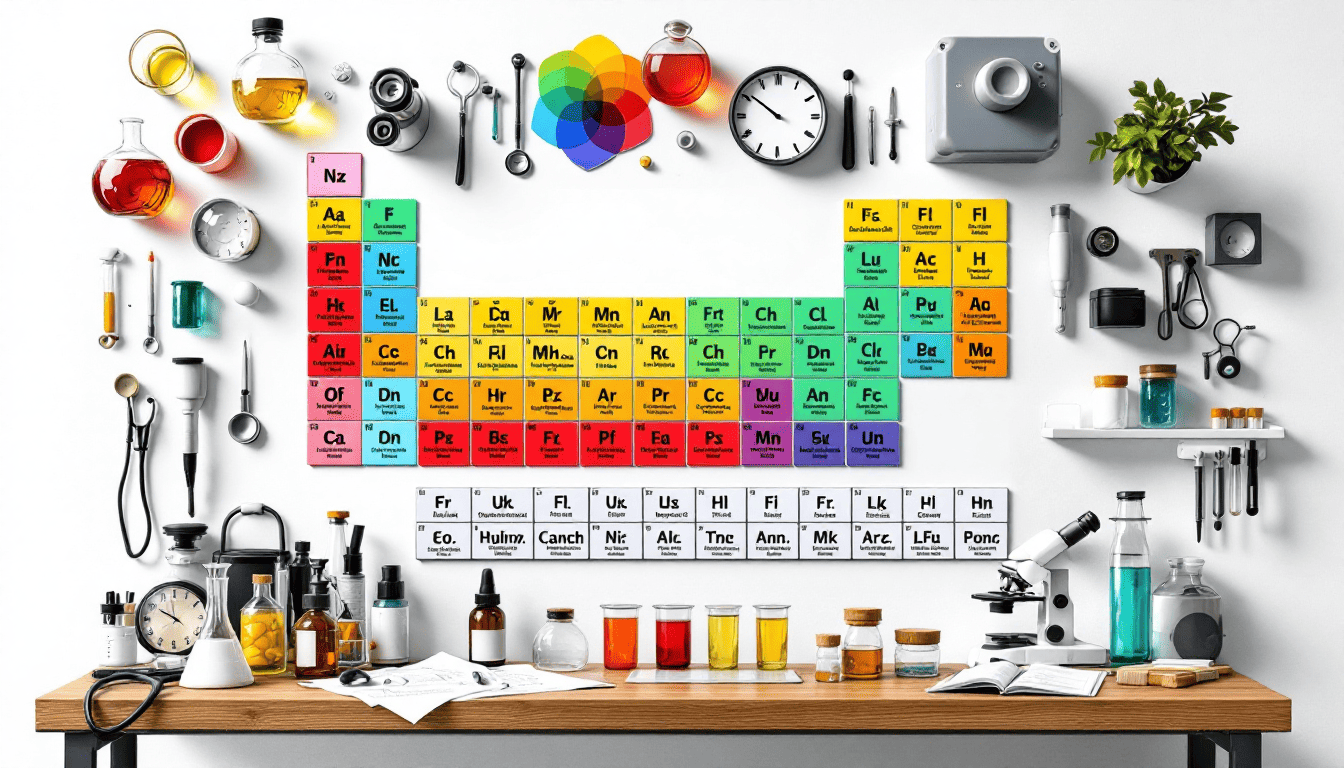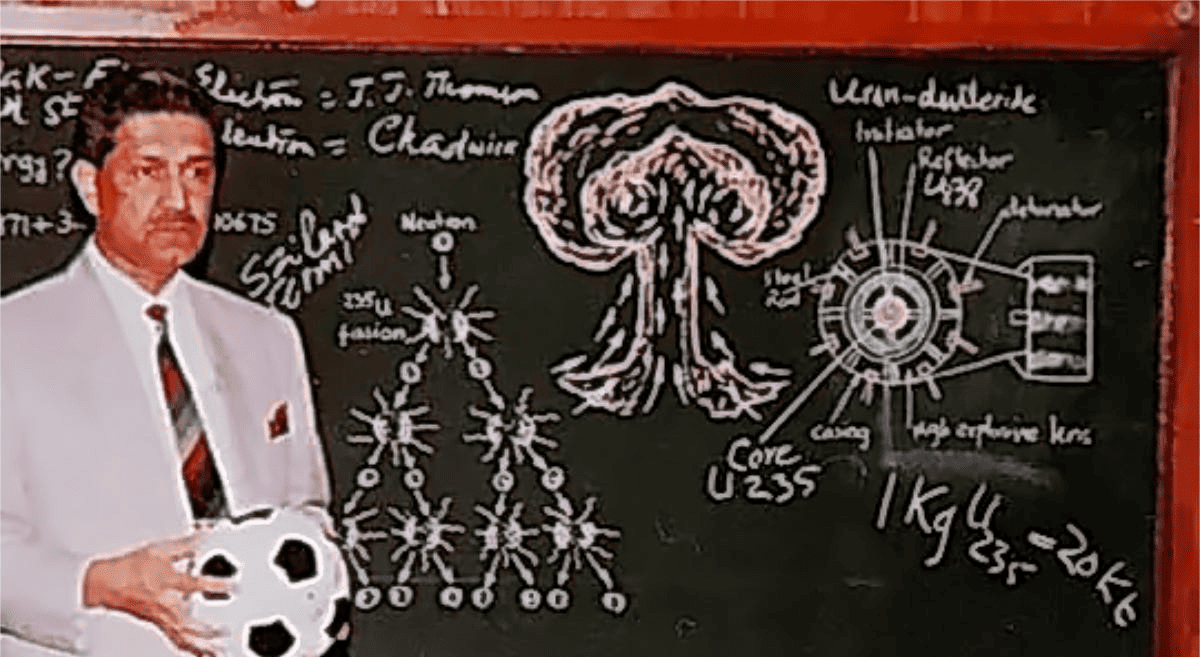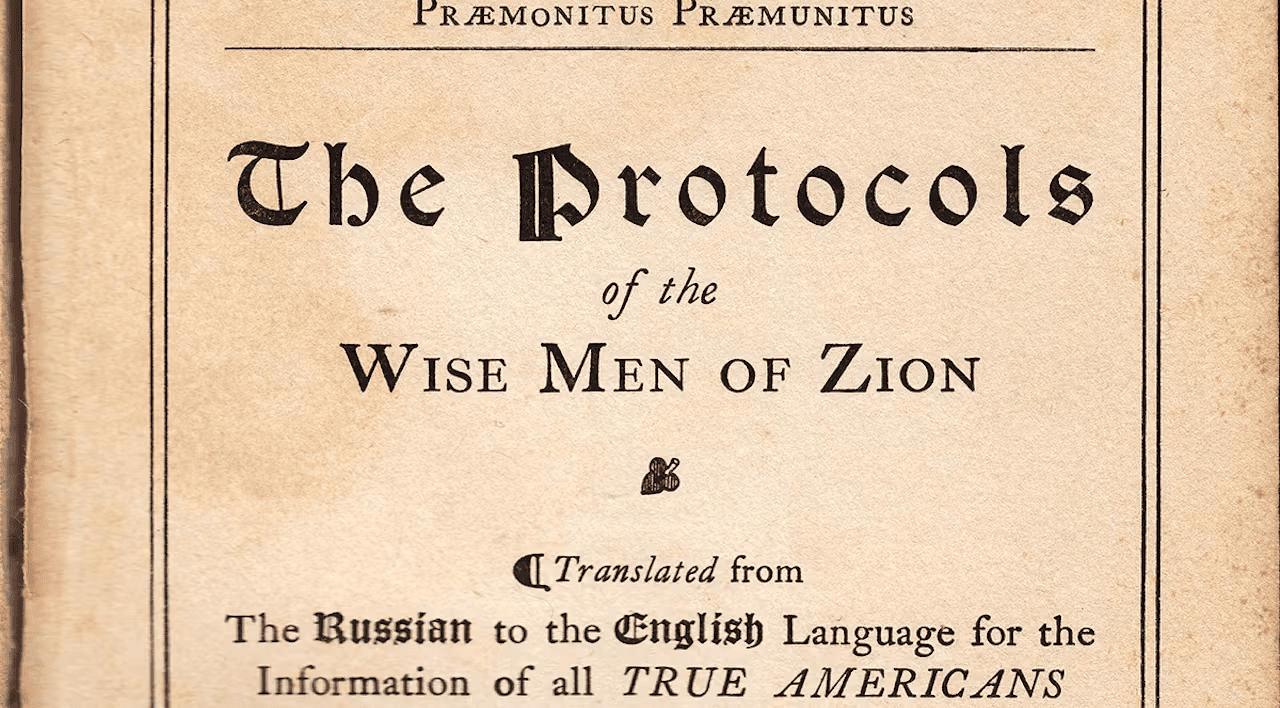The Rolleston Act: Scientific 6-Tier British Drug Regulation
Caffeine, nicotine, ethanol, cannabinoids, phenethylamines, cathinones, tryptamines, tropanes, barbiturates, opiates. They are all psychoactive substances acting on neurotransmitters. It's time for coherent legislation based on pharmacology and historical British wisdom.

The United Kingdom's current approach to psychoactive substance regulation rests on two principal pieces of legislation: the Misuse of Drugs Act 1971 and the Psychoactive Substances Act 2016. Both frameworks have proved inadequate to the task of protecting public health whilst permitting rational adult choice. The former operates through an ABC classification scheme ostensibly tied to harm, yet alcohol and tobacco (two of the most harmful substances by any epidemiological measure) sit entirely outside its scope.
The latter attempts to ban all psychoactive substances except those explicitly exempted, creating a legal absurdity where possession of kitchen spices might technically constitute an offence whilst the corner shop legally dispenses vodka and cigarettes to anyone over eighteen.
Our regulatory architecture treats substances according to their cultural familiarity and the political circumstances of their emergence, not according to their actual pharmacological properties or public health impact. Meanwhile, the United Nations conventions to which the UK remains party impose a prohibitionist framework designed in the 1960s, when our understanding of neurochemistry, addiction, and harm reduction was vastly more limited than today.
The system described here for Coppen's Great Repeal: the Rolleston Six-Tier Framework, establishes categories based on therapeutic index, dependency liability, and evidence quality rather than cultural prejudice or international treaty obligation. It encompasses all psychoactive substances, from carfentanil to coffee, within a single rational hierarchy.
3 Fundamental Principles: Science First
Any workable classification system must rest on defensible scientific foundations. Three parameters prove most salient in determining appropriate regulatory treatment: therapeutic index, reinforcement potential, and evidence quality.
The therapeutic index represents the ratio between a substance's median lethal dose and its median effective dose. A substance with LD₅₀ only twice its ED₅₀ presents an entirely different regulatory challenge from one where the lethal dose exceeds the effective dose by several orders of magnitude. This metric captures acute toxicity risk with reasonable precision, though it requires supplementation with data on cumulative toxicity, idiosyncratic reactions, and interactions with common medications or conditions.
Reinforcement potential describes the substance's capacity to generate compulsive use patterns through neurochemical hijacking of reward circuitry. Substances operating primarily through dopaminergic mechanisms (particularly those producing rapid onset and offset) demonstrate far higher dependency liability than those acting on serotonergic or other pathways.
The speed of onset matters considerably: crack cocaine and powder cocaine represent the same molecule delivered via different routes, yet their addiction profiles differ markedly due to pharmacokinetic differences.
Evidence quality determines our confidence in the preceding two parameters. For substances in widespread human use over decades or centuries, we possess extensive toxicological, epidemiological, and ethnographic data. For novel synthetic compounds emerging from clandestine laboratories, we may have nothing beyond a molecular structure and perhaps a handful of toxicology reports from emergency departments.
A rational system must accommodate this uncertainty explicitly rather than pretending to certainty where none exists.
The Six-Tier Framework
Tier 1: Intrinsically Prohibited / Unregulatable
This tier encompasses substances whose mechanism of action produces catastrophic risk to vital autonomic functions at or near intended doses. The defining characteristic is a therapeutic index so narrow as to be effectively non-existent—the LD₅₀ lies within one to five times the typical active human dose.
Carfentanil exemplifies this category. Designed as an elephant tranquilliser, it demonstrates such extreme potency that doses measured in micrograms produce respiratory arrest in humans. No social context exists in which unsupervised use could occur safely. Even trained anaesthetists working in controlled environments would hesitate to administer such compounds without immediate access to antagonists and resuscitation equipment.
Barbiturates in non-medical contexts belong here as well. These GABA-A agonists produced tens of thousands of deaths during their heyday as sleeping pills because the dose producing unconsciousness sits uncomfortably close to the dose producing respiratory suppression and death. Their replacement with benzodiazepines represented a genuine public health victory, yet barbiturates persist in illicit channels.
Inhalants, e.g. butane, petrol, aerosol propellants, industrial solvents, warrant inclusion despite their legal availability for legitimate purposes. These substances produce intoxication through global central nervous system depression and cellular hypoxia. Users cannot titrate doses with any precision, and death can result from a single session through cardiac sensitisation, asphyxiation, or aspiration. The fact these products serve other purposes does not diminish their toxicity when deliberately inhaled.
The criterion for Tier 1 placement is straightforward: substances whose primary mechanism produces direct suppression of brainstem respiratory centres, catastrophic cardiovascular effects, or cellular poisoning at intended recreational doses.
No amount of education or harm reduction infrastructure can render such substances safe for unsupervised use. There is no way to regulate them.
Tier 2: Clinical-Only
Tier 2 accommodates substances with recognised therapeutic value but requiring specialist administration under medical protocols. These compounds possess therapeutic indices broader than Tier 1 substances—typically LD₅₀ greater than five times but less than fifty times the effective dose—yet narrow enough to demand professional oversight.
Morphine and diamorphine (heroin) exemplify this group. Both serve as essential analgesics in palliative care and acute pain management. Both can be dosed safely in clinical contexts. Yet both demonstrate such substantial reinforcement potential and such manageable but non-trivial overdose risk that unsupervised community use produces unacceptable mortality. The solution is not prohibition but confinement to settings where trained personnel can monitor response, adjust doses, manage tolerance, and intervene if complications arise.
Fentanyl represents a more complex case.
In hospital anaesthesia, administered by infusion under continuous monitoring, fentanyl provides excellent analgesia with manageable risk. The pharmaceutical fentanyl patches prescribed for chronic pain occupy a different risk profile due to their slow-release mechanism. The illicitly manufactured fentanyl and fentanyl analogues flooding street heroin supplies belong in Tier 1. This illustrates an important principle: a single chemical entity may warrant different classifications depending on formulation, dose, and route of administration.
Ketamine belongs exclusively in Tier 2. Whilst recreational ketamine use has established itself in certain subcultures, the substance demonstrates sufficient complexity—including potential for bladder toxicity with repeated use, unpredictable psychological reactions, and possibility of dangerous behaviour during dissociative states—to justify restriction to clinical settings. Its use in anaesthesia, in emerging protocols for treatment-resistant depression, and in palliative care all occur under specialist supervision.
Methadone and buprenorphine merit Tier 2 status in their role within opioid substitution therapy programmes. Both substances demonstrate long half-lives and ceiling effects making them suitable for managed reduction of opioid dependency, yet both require careful induction protocols and monitoring for drug interactions and cardiac effects.
PCP (phencyclidine), should any clinical use ever be contemplated, would belong here as well. Originally developed as an anaesthetic, its unpredictable psychological effects and potential for violence during intoxication render it unsuitable for any context outside strict institutional control.
The unifying principle for Tier 2 is medical necessity combined with manageable but non-trivial risk.
These substances serve genuine therapeutic purposes. They can be used safely under appropriate protocols. But the margin for error remains too narrow, or the dependency risk too substantial, for community-based supply even with pharmacy-level safeguards.
Tier 3: Provisional Research-Only & Unknown
Tier 3 serves as the default category for all novel or insufficiently characterised psychoactive substances. This represents perhaps the most important innovation in the proposed framework: the explicit acknowledgement of uncertainty and the establishment of a holding category for unknowns.
The Psychoactive Substances Act 2016 attempted to solve the "legal high" problem by banning everything psychoactive unless specifically exempted. This approach proved unworkable in practice, criminalising possession of substances ranging from amyl nitrite to traditional kava preparations whilst doing little to prevent the emergence of novel synthetics. The fundamental error lay in assuming we must choose between permission and prohibition. Tier 3 offers a third way: acknowledged uncertainty pending adequate evidence.
Any newly emerged compound automatically enters Tier 3.
No retail supply occurs. No recreational use is legally sanctioned. Researchers with appropriate credentials and facilities may study the substance under approved protocols. As toxicological, pharmacological, and epidemiological data accumulate, the substance can move to an appropriate tier—up to Tiers 4, 5, or 6 if evidence demonstrates manageable risk, or down to Tiers 2 or 1 if evidence reveals narrow margins or high toxicity.
The NBOMe series—synthetic phenethylamines such as 25I-NBOMe—illustrates the necessity of this tier. These potent 5-HT2A agonists emerged in the early 2010s, often mis-sold as LSD. Unlike LSD, which demonstrates remarkable physiological safety despite its psychological potency, NBOMe compounds produced a cluster of deaths at doses not far above the active range. Vasoconstriction, hyperthermia, and seizures featured prominently in adverse event reports. Yet data remained sparse and contradictory.
Tier 3 provides the appropriate holding category: recognised as potentially dangerous, withdrawn from circulation, available only for supervised research until we understand the risk profile adequately.
Synthetic cannabinoids such as AMB-FUBINACA demonstrate similar problems. These compounds (sprayed onto plant material and sold as "spice" or "K2") bear no structural resemblance to THC beyond their activity at cannabinoid receptors. Many demonstrate full agonist activity at CB1 receptors, unlike THC which acts as a partial agonist. The result is a toxicity profile entirely unlike cannabis: severe agitation, psychosis, seizures, renal failure, and death have all been reported. Yet the specific dose-response relationships remain poorly characterised because users rarely know which specific compound they have consumed or in what concentration.
Novel benzodiazepines arriving from online vendors present yet another pattern. Flubromazolam, etizolam, and dozens of others flood the grey market, offering sedation and anxiolysis similar to pharmaceutical benzodiazepines but with little human safety data. Anecdotal reports suggest some possess extremely long half-lives or unusual potency curves. Without proper pharmacokinetic studies, prescribing information, or epidemiological tracking, these substances belong in Tier 3.
LSD presents an interesting edge case.
In one sense, LSD is among the most extensively studied recreational drugs, with thousands of human subjects receiving the compound in research settings from the 1950s through 1970s. Its physiological safety is well-established: the LD₅₀ in humans is unknown because no confirmed LSD overdose deaths exist despite millions of exposures.
Yet its extreme potency (active doses measured in micrograms), very long duration (eight to twelve hours), and potential for challenging psychological experiences create uncertainty about appropriate regulatory placement.
A conservative reading places LSD in Tier 3 pending more contemporary research on optimal set, setting, and harm reduction protocols, though a reasonable case exists for Tier 5 placement given the historical evidence base.
The criteria for Tier 3 inclusion are straightforward: absence of reliable human safety data, conflicting or incomplete preclinical evidence, or reports of unpredictable toxicity without clear dose-response relationships.
The default rule operates simply—any compound not explicitly scheduled elsewhere enters Tier 3 automatically.
Tier 4: Apothecary (Conditional Safe Dose with Substantial Habituation Risk)
Tier 4 encompasses substances with survivable unit doses but carrying substantial risk of dependency or escalation. These substances possess therapeutic indices typically exceeding fifty—safe single use is entirely possible—yet their interaction with dopaminergic reward circuitry creates potential for compulsive use patterns.
Cocaine is the classic example here. Whether as powder cocaine or crack cocaine (the same molecule delivered via different routes), cocaine operates as a potent dopamine reuptake inhibitor and releasing agent. The resulting euphoria reinforces continued use powerfully. Chronic use produces cardiovascular strain, potential for cardiac events, psychological dependency, and social harms.
Yet individual doses, when pure and accurately measured, rarely prove fatal in healthy individuals. The LD₅₀ sits well above recreational doses, and cocaine produces no dangerous withdrawal syndrome.
The distinction between powder and crack cocaine is pharmacokinetic rather than pharmacological. Crack's rapid onset when smoked produces more intense euphoria and more rapid dependency development than intranasal powder, but both presentations of the molecule warrant the same tier placement. The difference lies in delivery kinetics, not in the fundamental properties of the substance itself.
Methamphetamine and pharmaceutical amphetamines (Adderall, Dexedrine) occupy this tier for similar reasons. All are sympathomimetic stimulants releasing dopamine and noradrenaline. All produce euphoria, enhanced concentration, reduced appetite, and increased wakefulness. All demonstrate potential for dependency development and cardiovascular strain with chronic use.
The distinction between methamphetamine and dextroamphetamine rests mainly on potency and social context rather than fundamental pharmacology—both produce similar effects at equivalent doses, though methamphetamine's greater lipid solubility produces somewhat more intense central effects.
Methylphenidate (Ritalin, Concerta) belongs here as well, despite its widespread prescription to children for attention-deficit disorders. The therapeutic use of these substances in managed contexts does not negate their reinforcement potential when used recreationally or when prescriptions are diverted.
Benzodiazepines present a different pattern of risk: rather than dopaminergic reinforcement, these GABA-A positive allosteric modulators produce dependency through neuroadaptation—chronic use leads to downregulation of GABA receptors and dangerous withdrawal syndromes including seizures. Yet benzodiazepines demonstrate excellent therapeutic indices. Overdose rarely proves fatal in the absence of other central nervous system depressants, particularly alcohol or opioids.
The risk lies not in acute toxicity but in chronic use patterns. Substances like alprazolam, diazepam, and clonazepam warrant Tier 4 placement: dispensable under appropriate safeguards, but requiring monitoring and quantity controls to prevent dependency development.
The Z-drugs—zolpidem, zopiclone, eszopiclone—operate through similar GABA-ergic mechanisms and demonstrate similar dependency potential despite their distinct chemical structures. Pregabalin and gabapentin, originally developed as anticonvulsants, have emerged as drugs of misuse in some populations, producing sedation and euphoria at high doses whilst demonstrating dependency potential.
Tramadol occupies an intermediate position between conventional opioids and other analgesics. It combines weak opioid agonism with serotonin-noradrenaline reuptake inhibition, producing analgesia through dual mechanisms. Its overdose risk includes both opioid-type respiratory depression and potential for serotonin syndrome, particularly when combined with antidepressants. Yet doses can be managed safely in community settings with appropriate dispensing controls.
The unifying principle for Tier 4 is substantial but manageable risk.
These substances can produce dependency through either direct reinforcement or neuroadaptation. They can produce harm through chronic use. Yet acute use, when properly dosed, presents acceptable risk.
The appropriate regulatory response resembles traditional pharmacy practice: trained dispensers, recorded transactions, quantity limits, and patient education about dependency risk.
Tier 5: Controlled Retail
Tier 5 accommodates substances with broad safety margins and low to moderate habituation risk, demonstrable through either extensive historical use or contemporary clinical research. These substances possess LD₅₀ values typically exceeding one hundred times the active dose. Dependency development, whilst possible, occurs in minority populations and rarely produces the compulsive patterns characteristic of Tier 4 substances.
Cannabis represents the archetypal Tier 5 substance.
Whether as dried flower, resin, or extracted oils, cannabis demonstrates remarkably low acute toxicity. No confirmed fatalities from cannabis overdose exist in the medical literature. Chronic heavy use can produce psychological dependency and may exacerbate vulnerability to psychosis in susceptible individuals, yet most users consume cannabis occasionally or moderately without significant adverse effects.
The appropriate regulatory model resembles alcohol retail in jurisdictions like the Netherlands or several US states: licensed premises, age restrictions, quality control, and taxation without criminalisation.
Psilocybin mushrooms present a similar profile: these fungi, producing psilocybin and its active metabolite psilocin, demonstrate excellent physiological safety. Lethal doses have never been established in humans because accidental death from psilocybin poisoning does not occur—one would need to consume kilograms of dried mushrooms, an impossible task given their taste and the nausea they produce.
The principal risks are psychological: anxiety reactions during the experience, potential for accidents during altered states, and possible precipitation or exacerbation of latent mental health conditions. Contemporary research suggests significant therapeutic potential for depression, anxiety, and addiction when used in appropriate settings.
MDMA (3,4-methylenedioxymethamphetamine) occupies this tier in recreational contexts, though clinical trials investigating its therapeutic use in PTSD treatment operate under stricter protocols. MDMA demonstrates considerably higher acute toxicity than psilocybin. Deaths have occurred through hyperthermia, hyponatraemia, and serotonin syndrome.
Yet these risks prove manageable through education about hydration, temperature regulation, and avoiding dangerous combinations. Dependency potential exists but remains low compared to conventional stimulants. The substance's capacity to produce prosocial feelings and reduced defensiveness explains both its recreational popularity and its therapeutic potential.
Mescaline-containing cacti, primarily peyote (Lophophora williamsii) and San Pedro (Echinopsis pachanoi), demonstrate similar safety and low dependency profiles to psilocybin mushrooms. These have been used in religious and healing contexts in the Americas for thousands of years. The slow onset produced by consuming cactus material (as opposed to extracted mescaline) and the often challenging psychological content of the experience limit casual recreational use whilst permitting meaningful ceremonial and therapeutic applications.
DMT (N,N-dimethyltryptamine), whether smoked, vapourised, or consumed as ayahuasca in combination with MAOI-containing plants, presents extremely low toxicity and essentially zero dependency potential. The intensity and brevity of the smoked DMT experience (typically under fifteen minutes) and the profound psychological content limit frivolous use. In ayahuasca form, the experience lasts several hours and often includes significant physical discomfort, again limiting casual use patterns.
Nitrous oxide occupies an unusual position: as a dental anaesthetic and surgical adjuvant, it demonstrates good safety under appropriate administration. As a recreational drug, typically inhaled from whipped cream chargers or balloons, it produces brief euphoria and dissociation. Risks include oxygen deprivation if inhaled repeatedly without breaks, potential for B12 depletion with very heavy chronic use, and accidents during intoxication. Yet acute toxicity remains low, and dependency rare. Appropriate controls might include quantity limits on charger sales and age restrictions whilst permitting retail availability.
Salvia divinorum, producing the potent kappa-opioid agonist salvinorin A, demonstrates very low toxicity and minimal abuse potential. The experiences produced are often described as confusing or unpleasant rather than euphoric, limiting repeat use. Its placement in Tier 5 reflects its low risk profile despite its legal status as a controlled substance in many jurisdictions.
Kratom (Mitragyna speciosa) contains alkaloids with partial opioid agonist activity, producing stimulant effects at low doses and sedation at higher doses. It has been used traditionally in Southeast Asia for centuries. Dependency can develop with daily use, and withdrawal syndromes have been reported, though these appear milder than withdrawal from conventional opioids. Fatalities associated with kratom typically involve adulteration or combination with other substances. Its safety profile and traditional use history support Tier 5 placement, though some jurisdictions might argue for Tier 6 given its long cultural embedding in source countries.
The criteria for Tier 5 revolve around demonstrated safety, manageable risk profiles, and evidence of non-compulsive use patterns in substantial populations.
These substances warrant regulation—age restrictions, quality control, retail licensing, taxation—but not prohibition. The model resembles regulated alcohol markets more than pharmacy-style dispensing.
Tier 6: Everyday Consumer Goods
Tier 6 encompasses substances with very wide safety margins, trivial acute risk at customary doses, and such extensive cultural embedding that prohibition would be unthinkable. These substances possess LD₅₀ values orders of magnitude higher than typical consumption. Whilst chronic use of several Tier 6 substances produces substantial harms, these harms accrue gradually rather than presenting immediate danger.
Caffeine is the obvious example. Consumed primarily through coffee, tea, and energy drinks, caffeine demonstrates remarkably consistent effects: increased alertness, mild euphoria, enhanced concentration, and at higher doses, anxiety and insomnia.
Fatal caffeine overdoses require consumption of tens of grams of pure caffeine—achievable through concentrated powder products but impossible through normal beverage consumption. Dependency develops readily, manifesting as withdrawal headaches and fatigue when regular users abstain. Yet the social costs of caffeine use remain minimal compared to its benefits in enabling alertness and productivity.
Theobromine, the primary psychoactive compound in chocolate, produces milder stimulation than caffeine with less reinforcement potential. Its presence in chocolate contributes to that food's popularity, yet its effects are sufficiently subtle and its toxicity sufficiently low as to require no special regulatory attention beyond ordinary food safety standards.
Nicotine in the form of nicotine replacement therapy (patches, gum, lozenges) warrants Tier 6 placement. These delivery systems provide the substance responsible for tobacco addiction whilst eliminating the carcinogens and combustion products responsible for most tobacco-related deaths.
Whilst nicotine itself demonstrates substantial reinforcement potential and cardiovascular effects at high doses, the slow delivery achieved through NRT products makes them suitable for general retail sale with age restrictions.
Low-dose codeine combination products, sold over the counter in many jurisdictions for headache and mild pain, belong in this tier when formulated with paracetamol or ibuprofen in ratios discouraging abuse. The presence of dose-limiting compounds prevents extraction and misuse whilst providing legitimate analgesia.
Kava (Piper methysticum), prepared traditionally as an aqueous root extract, has been consumed in Pacific Island cultures for thousands of years in social and ceremonial contexts. It produces mild anxiolysis and sedation through modulation of GABA-A receptors and voltage-gated ion channels.
Safety concerns emerged in the 1990s regarding hepatotoxicity, but subsequent research suggests these cases involved inappropriate preparations (using leaves rather than roots) or interaction with alcohol and other hepatotoxic substances. Traditional aqueous root preparations demonstrate excellent safety profiles.
CBD-dominant products, derived from cannabis strains bred for high cannabidiol and low THC content, produce no intoxication whilst potentially providing anxiolytic, anti-inflammatory, and anticonvulsant effects. Their placement in Tier 6 reflects their minimal psychoactivity and excellent safety profile.
Dextromethorphan at cough suppressant doses (typically 10-30mg) provides effective antitussive action through NMDA antagonism. At these doses, psychoactive effects remain minimal. The fact that higher doses produce dissociative intoxication (leading to abuse in some populations) does not negate the legitimacy of its use at therapeutic doses in over-the-counter formulations.
Alcohol presents the most problematic case in Tier 6.
By any objective measure, ethanol is among the most harmful drugs in common use. It demonstrates moderate acute toxicity—lethal doses sit within reach of determined drinkers. Chronic use produces cirrhosis, cancer, cardiovascular disease, and neurological damage. Dependency develops commonly and produces dangerous withdrawal. Intoxication contributes to violence, accidents, and social disorder.
Yet alcohol occupies such a central position in British culture, and prohibition proved so comprehensively unworkable when attempted, that its placement in Tier 6 reflects political and cultural reality rather than pure pharmacology. The technical term for this is "grandfathered"—present too long to dislodge.
The unifying principle for Tier 6 is cultural integration combined with manageability of harms through education, social norms, and existing regulatory frameworks.
These substances are already woven into daily life. Attempting to restrict their availability would prove futile and counterproductive. The appropriate regulatory response involves quality control, age restrictions, taxation, and public health messaging rather than prohibition or tight control.
Movement Between Tiers
The framework's utility depends on substances being able to move between tiers as evidence accumulates or as formulations change. Several principles govern such movement.
Scientific evidence determines upward movement (from Tier 3 to Tiers 4, 5, or 6). A substance must demonstrate adequate safety margins, characterised dependency profiles, and manageable acute risks before leaving the provisional category. The burden of proof lies with proponents of liberalisation: we assume substances are risky until proven otherwise.
Conversely, evidence of harm justifies downward movement. If a Tier 5 substance proves more toxic than initially understood, or if dependency develops more commonly than anticipated, reclassification to Tier 4 or lower becomes appropriate. The emergence of particularly dangerous formulations or adulterants might justify emergency reclassification.
Some substances might warrant multiple tier placements depending on formulation or context. Fentanyl in hospital infusion represents Tier 2; pharmaceutical fentanyl patches might arguably occupy Tier 4; illicitly manufactured fentanyl analogs belong in Tier 1. THC-dominant cannabis products might remain in Tier 5 whilst CBD-dominant products sit in Tier 6. This granularity better reflects actual risk than monolithic scheduling.
The process for reclassification should involve transparent scientific review, including toxicological data, clinical evidence, epidemiological patterns, and stakeholder consultation. Political considerations should influence implementation timelines and regulatory mechanisms but should not override scientific assessment of risk.
Addressing Common Objections
First, critics might argue that placing substances in tiers implies endorsement of use. This objection confuses description with prescription. The framework describes relative risk and appropriate regulatory responses without advocating consumption of any substance. Acknowledging that psilocybin mushrooms demonstrate lower toxicity than methamphetamine does not constitute encouragement to consume mushrooms any more than acknowledging that cars are more dangerous than bicycles constitutes encouragement to cycle.
Second, some will object to treating alcohol and tobacco equivalently to currently illicit substances. Yet this objection reveals precisely the incoherence the framework seeks to address. If we accept that ethanol and nicotine warrant legal availability despite their harms, consistency requires we evaluate other substances by similar criteria. The alternative, maintaining arbitrary distinctions based solely on historical accident, serves neither public health nor rational policy. It's simply not scientific.
Third, concerns about normalisation merit consideration. Bringing substances into legal regulatory frameworks might reduce taboo and increase uptake. Yet evidence from cannabis legalisation jurisdictions suggests well-designed regulatory systems can manage availability without producing dramatic increases in problematic use. More importantly, the counterfactual—continued prohibition—demonstrably fails to prevent use whilst generating substantial harms through criminalisation, contaminated supply, and barriers to help-seeking.
Fourth, some will worry about international obligations under UN conventions. These conventions were negotiated when scientific understanding remained far more limited. Nations have legitimate interests in protecting public health that may supersede treaty obligations drafted generations ago. Moreover, several countries have already moved away from prohibitionist approaches without collapse of international cooperation. The conventions themselves permit medical and scientific use, providing a potential pathway for reform.
Restoring Sensible Regulation Law
The framework presented here for the Great Repeal offers a more rational foundation for psychoactive substance regulation than currently exists in the United Kingdom or most other jurisdictions. It treats all psychoactive substances, from carfentanil to nictoine, within a single coherent system based on therapeutic index, dependency liability, and evidence quality.
Implementation would require substantial political will. It would demand rejection of both the UN convention framework and the Misuse of Drugs Act's ABC classification. It would require acknowledgement that alcohol and tobacco must be evaluated by the same criteria as currently illicit substances. It would necessitate creation of new regulatory mechanisms for Tiers 4 and 5, drawing on models from pharmacy practice, licensed premises, and consumer protection law.
Yet the alternative is continued incoherence: a system where the most harmful substances remain freely available whilst less toxic compounds remain criminal; where novel synthetics proliferate faster than legislation can respond; where adults cannot make informed choices about manageable risks; where users face contaminated supplies and criminalisation rather than quality control and health services.
The Rolleston Six-Tier Framework does not promise perfect safety. No regulatory system can eliminate risk from psychoactive substance use. Rather, it promises more honest, more consistent, and more scientifically defensible policy. It acknowledges uncertainty through Tier 3. It distinguishes between substances requiring strict clinical control and those permitting regulated retail. It applies the same criteria to alcohol as to heroin, to caffeine as to cocaine.
Whether such a framework could ever be implemented politically remains uncertain. But its value lies partly in the clarity it brings to debates too often conducted in bad faith, using categories designed for political convenience rather than public health. Whatever regulatory approach ultimately prevails, it should be able to answer the question: why is this substance in this category? The six-tier framework provides an answer based on science rather than historical accident.





